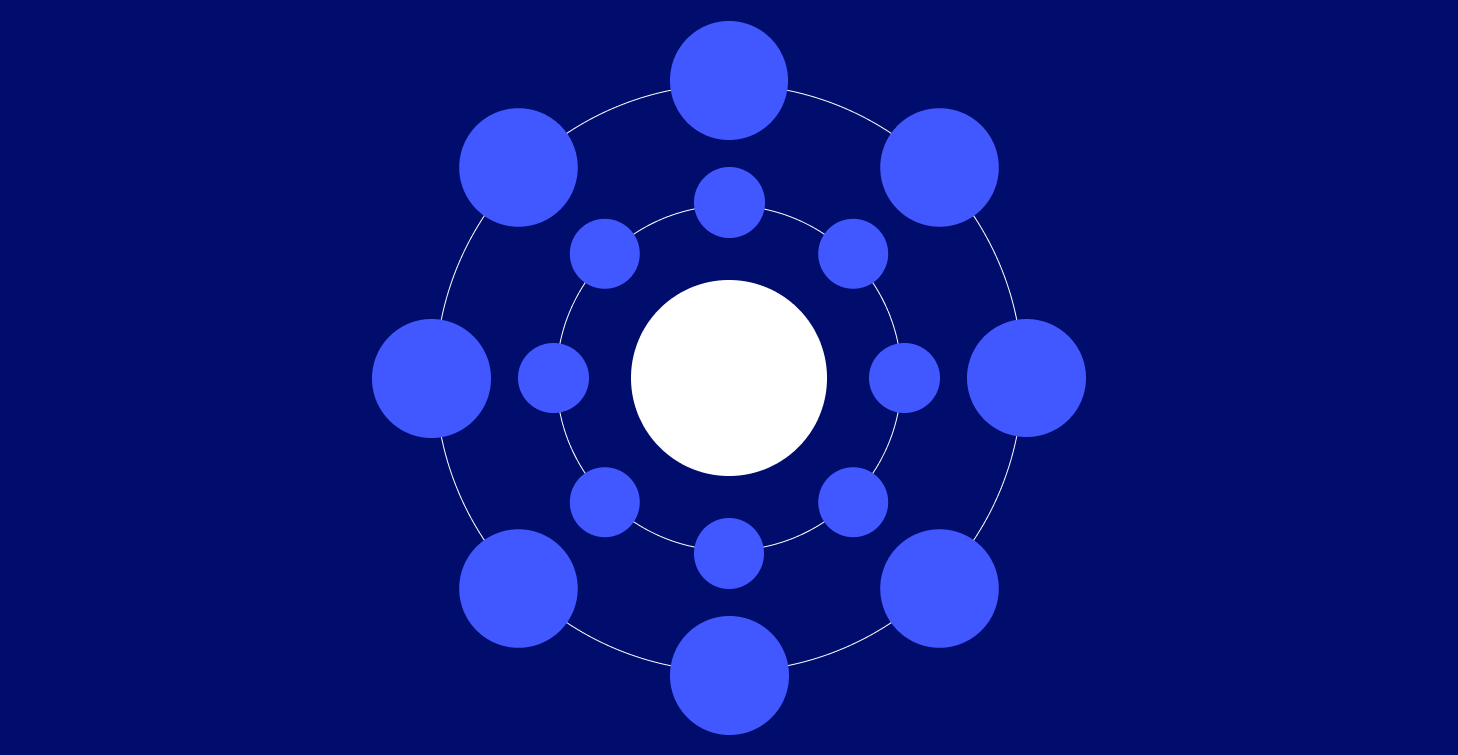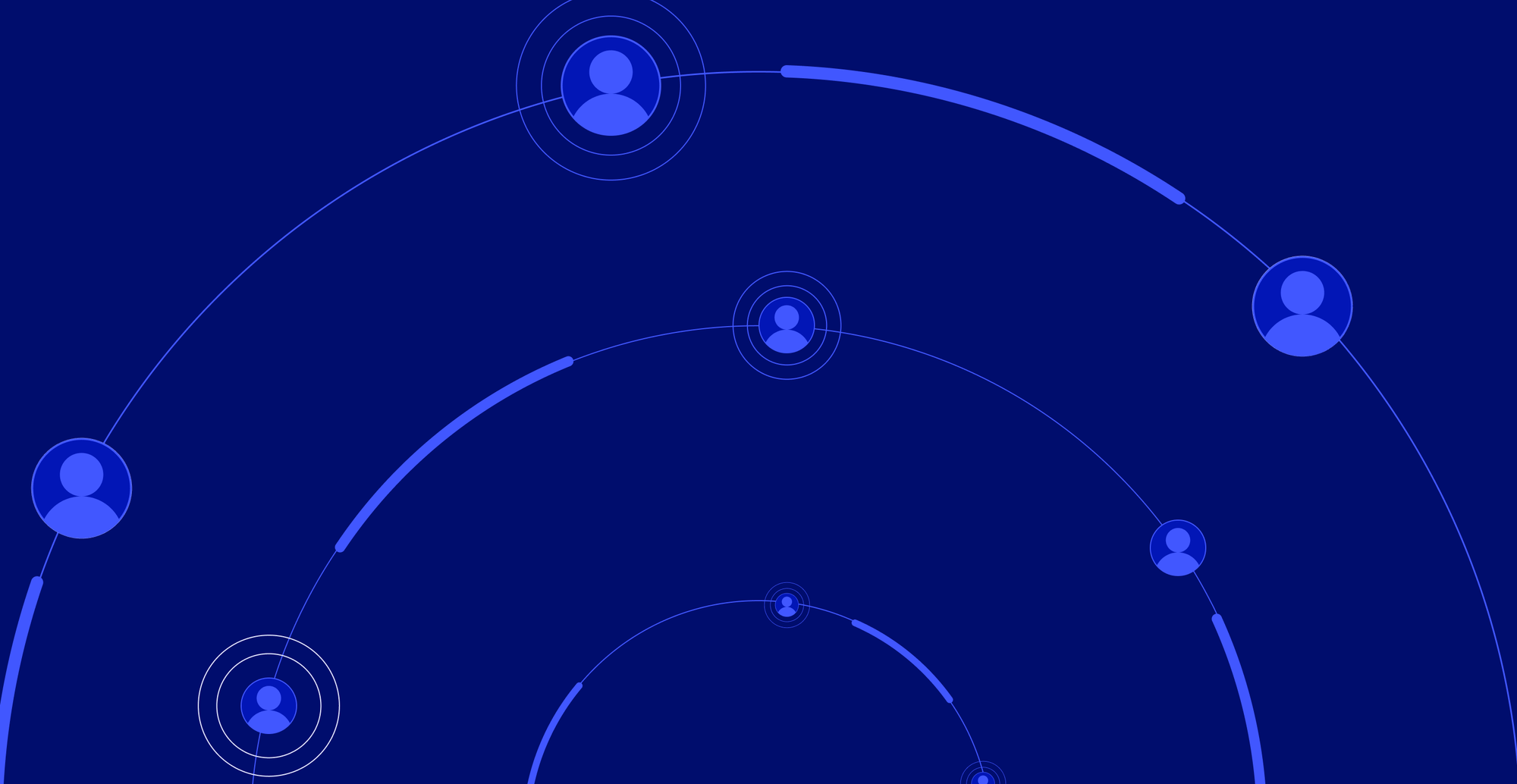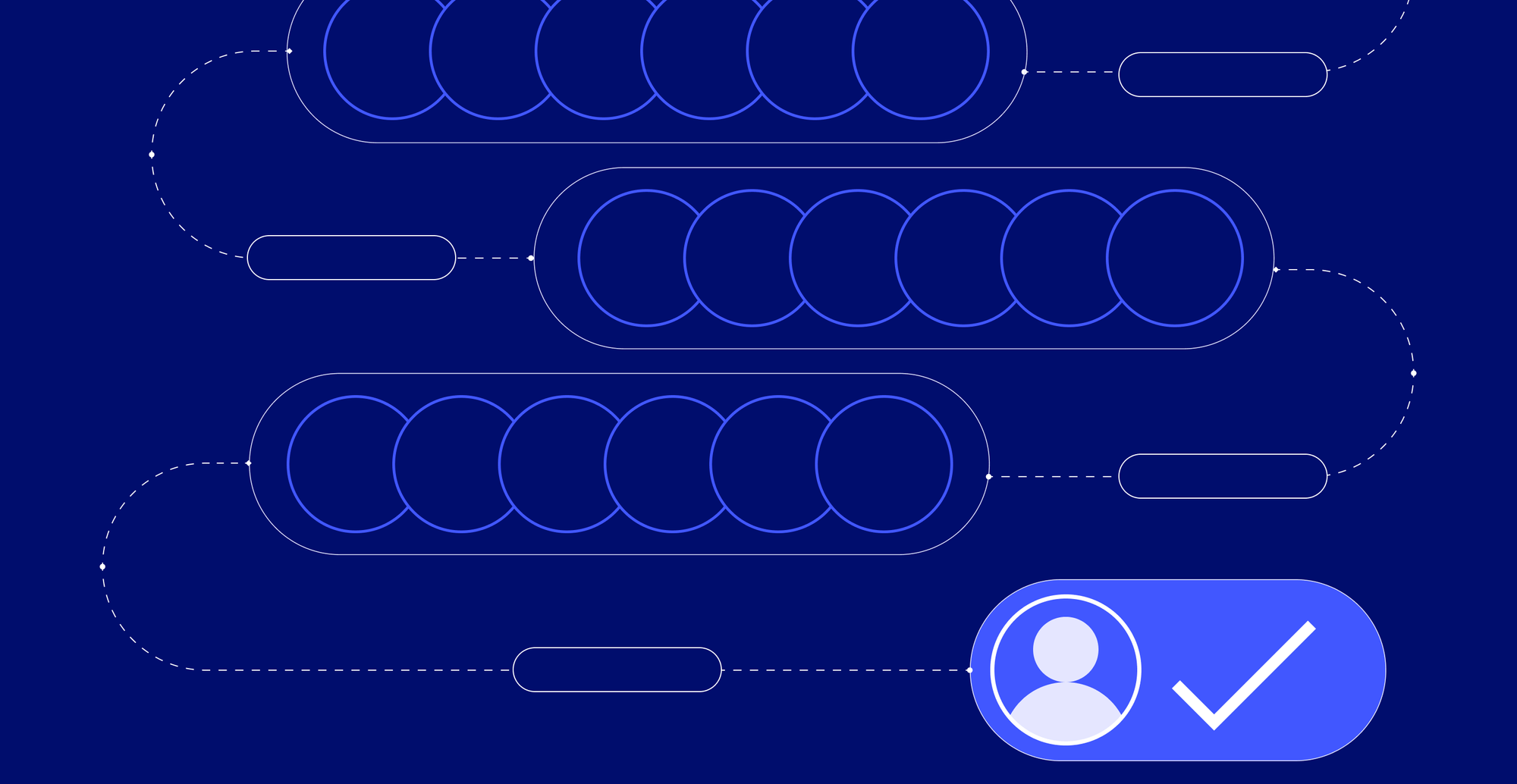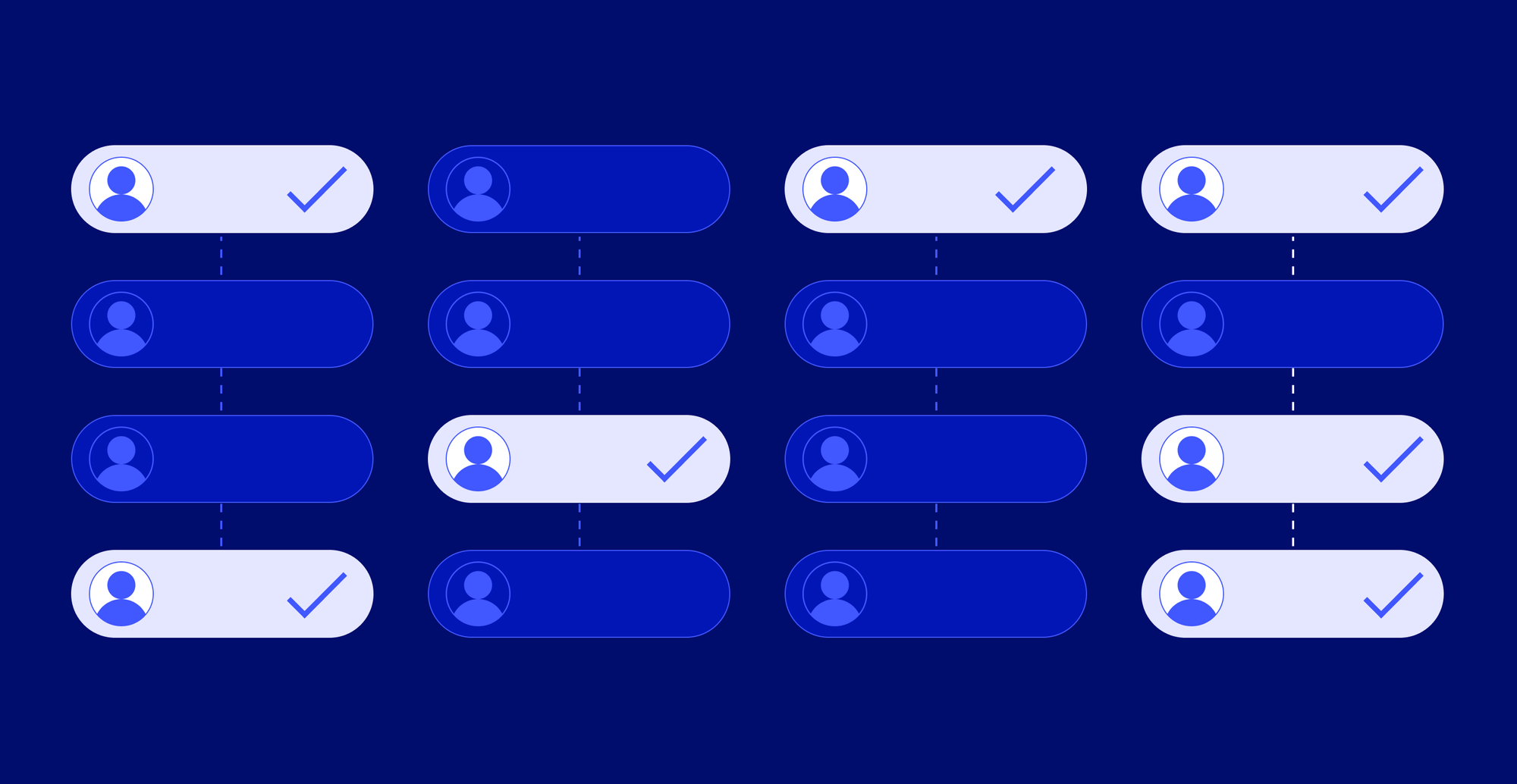Smart lead enrichment in your CRM
Discover how CRM lead enrichment can improve your sales and marketing. Learn to update and enrich lead data for better targeting, personalization, and ROI.
.jpeg)


What is CRM lead enrichment?
Your guide to smarter sales and marketing data
B2B data decays at a rate of over 2% per month, and nearly 30% of the workforce changes jobs annually. That means your customer relationship management (CRM) can become outdated fast.
The result is wasted outreach, missed opportunities, and a sales funnel clogged with unqualified leads.
In this article, we explore what CRM lead enrichment is and how you can update records with accurate job titles, company data, and intent signals to transform inaccurate data into actionable leads that your teams can trust.
What is CRM lead enrichment?
CRM lead enrichment is the process of updating the contact and company records in your CRM with additional, relevant data points. These include job titles, company size, industry, or intent signals, and create complete lead profiles. The goal is to ensure every record is accurate, current, and actionable.
Here’s why it matters:
- Personalization at scale depends on context: Knowing who a prospect is, what they do, and where they are in the buying journey allows reps and marketing teams to tailor outreach
- Account-based marketing requires complete profiles: To reach multiple decision-makers within a target account, teams need enriched CRM data that maps the full buying committee
- AI-powered workflows need clean data: Predictive lead scoring, automated lead qualification, and sales automation only work if the underlying data is accurate
- Sales efficiency improves with relevance: Instead of wasting time chasing incomplete lead profiles, reps focus on high-quality leads with context that supports faster conversions
What does smart CRM data enrichment include?
The most common types of data include:
- Firmographic data: Company size, industry, revenue, and location help sales and marketing teams prioritize accounts that match their ideal customer profile (ICP). This supports both lead scoring and account-based marketing strategies.
- Demographic data: Job titles, seniority, and role-based details provide the context reps need to qualify leads and tailor messaging. Knowing whether you’re speaking to a decision-maker or influencer changes how you approach the conversation.
- Technographic data: Information on the tools, platforms, or software a company already uses. For example, if a prospect is hiring for Salesforce expertise, it’s a signal that they may need complementary tools that integrate with Salesforce.
- Intent data: Buying signals from sources such as job postings, website activity, or content engagement that reveal where prospects are in the buying journey. This helps prioritize leads based on who’s most likely to convert now.
- Behavioral data: Interaction history across email, social media, and other channels shows how engaged a prospect is with your brand. This supports more accurate lead tracking and nurtures leads through multiple touchpoints.
- Contact details: Verified phone numbers, email addresses, and LinkedIn profiles ensure outreach efforts actually reach the right person, reducing wasted time on bounced emails or disconnected numbers
Maintaining CRM hygiene is one of the hardest parts of lead enrichment. Built for Salesforce and HubSpot, LoneScale automates CRM enrichment and hygiene.
You pick a trigger, an account list, inbound signal, or scheduled run. From there, LoneScale’s AI research agents scan 30+ trusted sources, pulling firmographics, contact details, and actionable insights in real time. The results are written directly into your CRM, with standardized fields and AI summaries ready for qualification and prioritization.
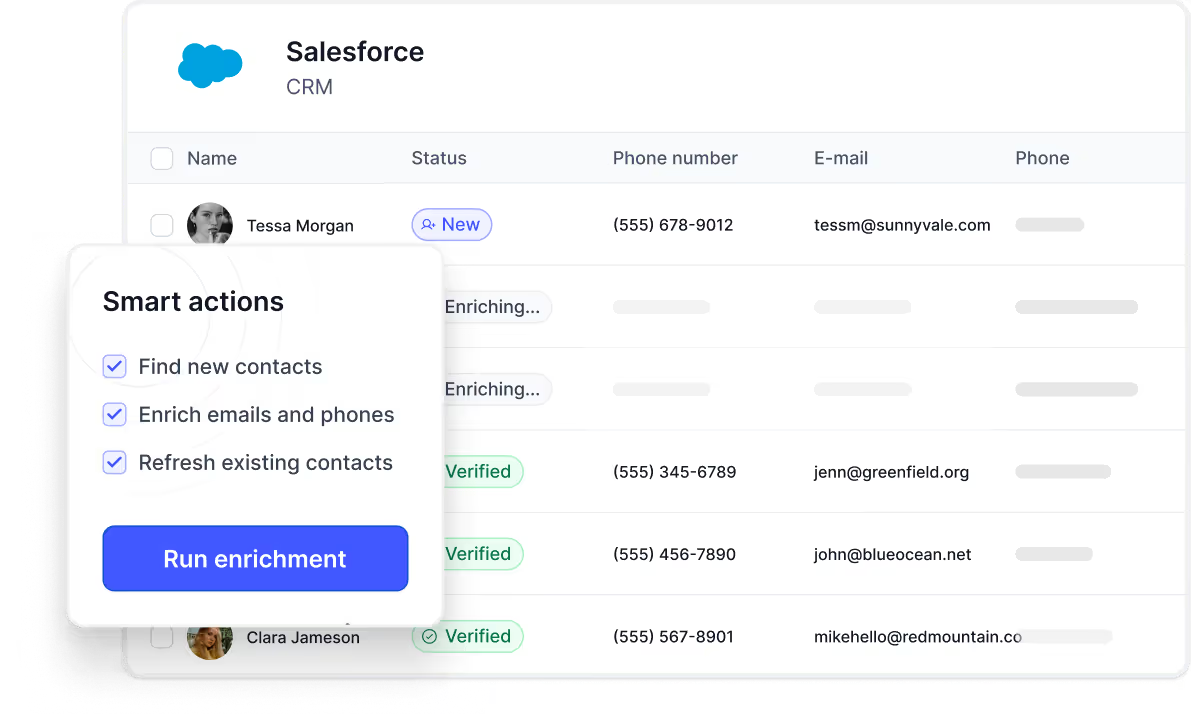
Manual vs. smart CRM lead enrichment: What’s the difference?
Manual processes keep teams stuck in spreadsheets and admin work, while smart CRM enrichment automates the entire flow with accuracy and scale.
Here’s a quick overview of the differences:
The benefits of lead enrichment
From improving lead quality to accelerating deal cycles, enriched CRM data gives teams the context they need to work smarter and close faster.
Improved lead qualification and scoring
Lead qualification is the process of deciding if a prospect fits your ideal customer profile (ICP) and is worth pursuing. Lead scoring builds on that by giving each lead a numerical score that reflects their likelihood to buy.
Scores are usually based on a mix of:
- Intent data
- Engagement data
- Demographic and firmographic data
For example, a VP-level prospect at a 1,000-person company who downloads a product guide might score higher than an intern at a 20-person firm who simply clicks a blog link.
The challenge is that lead scoring only works if the CRM data is complete and accurate. Outdated job titles, missing company details, or gaps in lead data can throw off the scoring model and mislead the sales team.
Smart lead enrichment in your CRM automatically pulls verified contact data, firmographics, and intent signals from multiple sources, while enrichment tools feed your scoring model with reliable lead enrichment data. This helps both sales and marketing teams prioritize high-quality leads, align their lead generation strategy, and move the right prospects through the sales funnel with confidence.
Stronger sales productivity and personalization
Personalization is where sales teams see the biggest impact from enrichment. When records are updated with accurate data, reps stop wasting time on dead-end contacts.
This also transforms cold outreach. Instead of sending generic templates, reps can adapt messages to reflect a lead’s situation. A new CMO gets a note about building their 90-day plan. A growing startup with 200 employees hears about scaling operations. A B2B lead showing strong intent signals receives a tailored pitch around efficiency gains.
The benefits don’t stop at one-to-one outreach. Personalization strengthens lead generation efforts overall by improving open rates and responses. In fact, MoEngage’s 2025 Email Benchmarks study across 17 billion emails found that personalized emails achieved open rates up to 37.04%, compared to 26.9% for non-personalized broadcasts, proving that personalization fuels better customer engagement.
Smarter marketing and ABM targeting
Account-based marketing (ABM) is a strategy in which marketing and sales teams focus their efforts on a defined list of high-value accounts, rather than casting a wide net. The goal is to engage multiple stakeholders inside each account with personalized messaging across multiple channels.
Effective ABM targeting requires two things: complete visibility into the buying committee and accurate contact data.
LoneScale makes this possible with two key capabilities:
- Waterfall Enrichment: Instead of relying on a single vendor, LoneScale connects to 25+ data providers with country- and account-specific rules. That means higher coverage, fewer gaps, and reliable access to decision-makers across regions.
- MQL Enrichment: Inbound leads from forms, webinars, or events are instantly matched to the right contact and account, enriched with 40+ data points, and routed to the right GTM motion in Salesforce or HubSpot. Qualified leads flow to sales; the rest recycle into the nurture flow automatically.
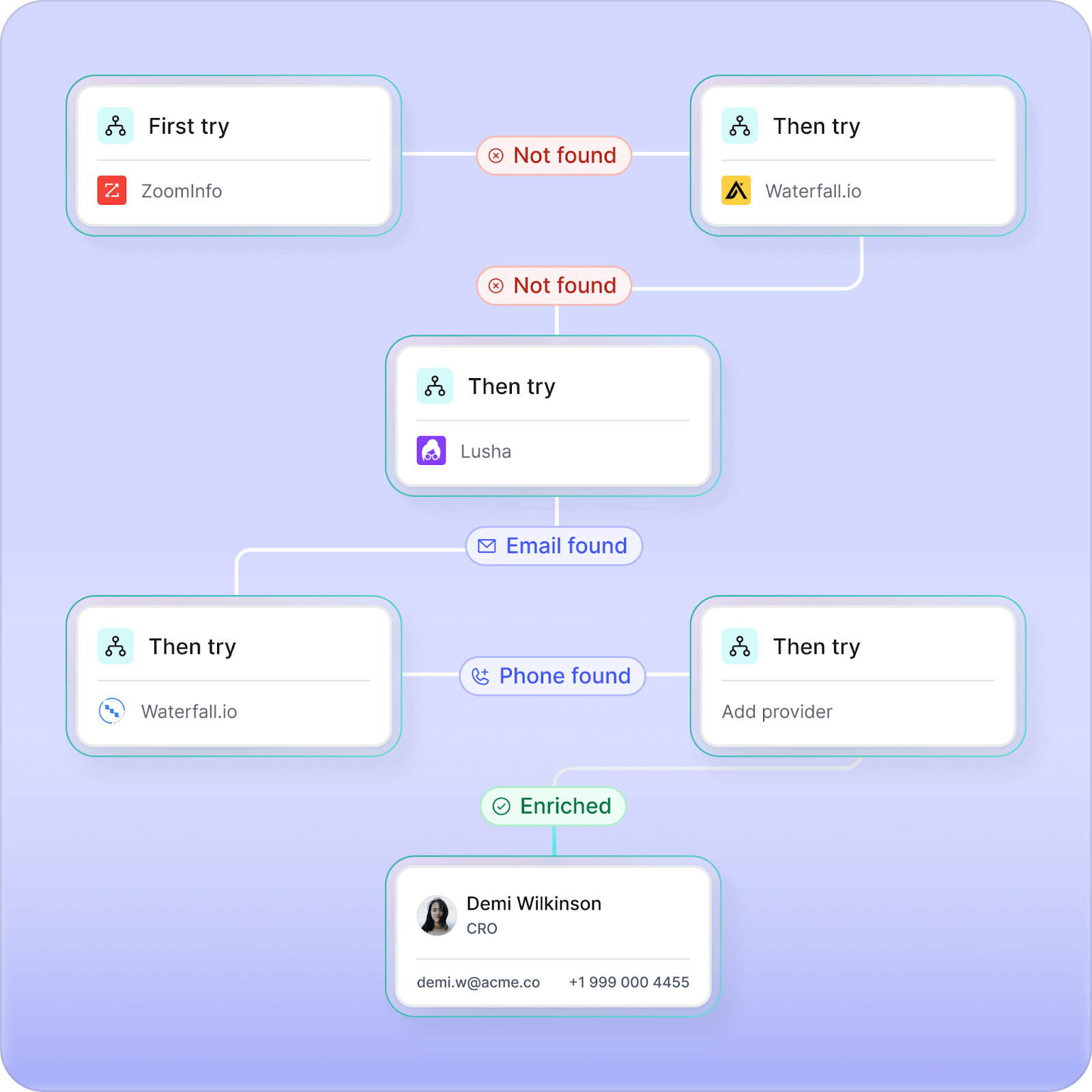
Better customer engagement and retention
Winning a deal is only the first step. To retain customers, teams must engage them with up-to-date information and personalized touchpoints across multiple channels like LinkedIn, job boards, company websites, technographic databases, and even social media mentions.
This mix of sources delivers deeper insights. If enrichment shows a champion has left, success teams can re-establish the relationship with their replacement before churn risk sets in. If hiring data indicates expansion, reps can flag an upsell or cross-sell opportunity. If news coverage highlights a product launch or funding round, account managers can reach out with a timely message that resonates.
For marketers, enriched profiles enable targeted marketing campaigns that segment by industry, region, or role. Instead of blanket emails, they can nurture leads with content that reflects the customer’s current stage and priorities.
Increased ROI and lower customer acquisition cost (CAC)
ROI and CAC are the two metrics most leadership teams track to judge the efficiency of sales and marketing strategies.
- Return on investment (ROI) shows how much revenue you generate compared to the cost of a campaign. Formula: (Revenue–Cost) ÷ Cost.
- Customer acquisition cost (CAC) is the average cost to win a new customer. Formula: (Sales + Marketing spend) ÷ Number of new customers.
Bad data inflates both. If marketing teams run campaigns on incomplete or outdated lead data, the budget goes toward the wrong audience, pushing CAC up. If sales teams chase unqualified contacts due to missing contact details or incorrect company size, conversion rates drop, which cuts ROI.
Alongside ROI and CAC, there are other metrics that you should track to understand the full impact of crm data enrichment:
- Lead-to-customer conversion rate shows how many of your new leads actually become paying customers
- Pipeline velocity highlights how quickly qualified leads progress through the sales funnel, a signal of sales efficiency
- Cost per lead (CPL) measures the efficiency of your lead generation strategy by showing how much it costs to capture leads
- MQL to SAL ratio reflects how well marketing teams and sales teams align on lead quality
- Churn rate tracks retention and reveals how enrichment-driven insights (like job changes or expansion) help you nurture leads and reduce risk
But to measure these metrics, you need the right tools.
Lead enrichment tools for automated CRM enrichment
A smart CRM lead enrichment solution should:
- Aggregate data from multiple sources (e.g., contact databases, technographic platforms, job boards, social profiles) to ensure depth and coverage
- Offer real-time enrichment and routing, so new leads or signups are instantly enriched and delivered to sales and marketing teams where they already work
- Support AI-powered automation, including predictive lead scoring and segmentation, to reduce manual work and boost targeting precision
- Provide built-in workflow automation and dashboarding, allowing you to trigger actions like MQL routing or campaign segmentation without switching tools
- Maintain strong data validation and privacy compliance (GDPR, CCPA) to protect both your business and your contacts
With these capabilities in place, enrichment stops being a background task and becomes the foundation of your entire lead generation strategy.
Third-party enrichment platforms
Teams rely on third-party enrichment platforms that plug directly into Salesforce, HubSpot, and other systems. These tools pull in firmographic, technographic, and intent data so sales and marketing teams can work with richer profiles and more qualified leads.
LoneScale goes beyond static databases by combining its own signal-based orchestration with a waterfall enrichment engine. This setup lets customers plug in providers like ZoomInfo, Apollo.io, Cognism, and Lusha to maximize coverage across geographies and industries. LoneScale enriches contacts with job changes, new hires, and buying signals, then writes standardized data directly into Salesforce or HubSpot for instant action.
AI & automation add-on solutions
AI agents run in the background to qualify leads, summarize findings, and update records in real time. These add-on solutions plug directly into Salesforce and HubSpot, eliminating the need for scripts, spreadsheets, or extra interfaces.
With smart triggers, teams can activate agents whenever an inbound form is submitted, a target list changes, or a scheduled refresh is due. The agents then scan trusted web sources and multiple data providers for firmographic and intent insights.
LoneScale’s AI Research Agents:
- Auto-extract company and contact details from 30+ sources
- Generate AI-powered account summaries tailored by business unit
- Keep records continuously fresh with live monitoring and auto-refresh
- Map outputs directly to Salesforce or HubSpot picklists, checkboxes, or custom fields
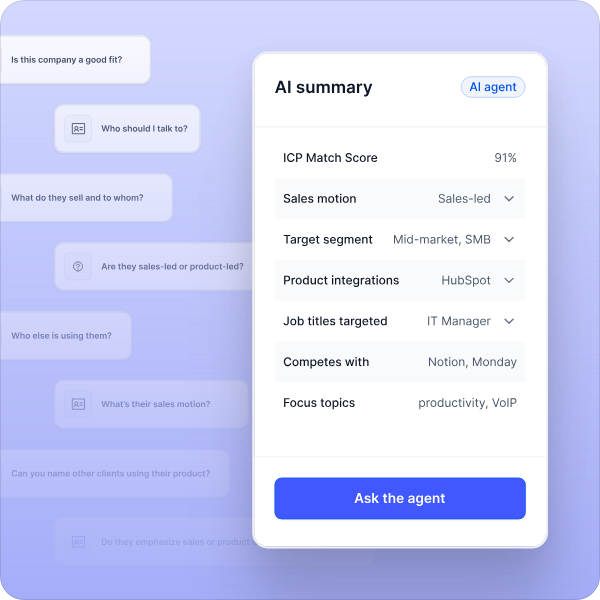
Best practices for smart CRM lead enrichment
Too often, teams add more data without improving lead quality, or they silo enrichment away from daily workflows. The following lead enrichment best practices will help you turn enrichment into a reliable driver of pipeline and revenue:
- Prioritize accuracy over volume: More data isn’t always better. Focus on validated contact details and company data that help you find the most promising leads and avoid overwhelming reps with noise.
- Automate enrichment workflows: Use automated CRM enrichment and AI-powered agents to refresh records daily, enrich inbound forms instantly, and trigger lead routing rules, reducing manual updates
- Integrate enrichment into existing CRMs: Choose tools that write directly into Salesforce, HubSpot, or your system of record. This ensures sales teams and marketing teams work with the same up-to-date information, avoiding silos.
- Align enrichment with go-to-market strategy: Tie enriched lead data to your lead generation strategy, account-based marketing programs, and sales process. Enrichment is most effective when mapped to how your team already qualifies and nurtures leads.
- Keep compliance and privacy in mind: Make sure your enrichment vendor follows GDPR, CCPA, and SOC 2 standards. This protects your customer data and ensures your marketing campaigns stay compliant.
Sell better with smart lead data enrichment in your CRM
When every profile includes accurate contact details, real-time company data, and meaningful intent signals, marketing and sales efforts can focus on the leads most likely to convert.
The impact of enriched data stretches across the funnel with faster lead qualification, more relevant marketing campaigns, higher retention, and lower acquisition costs. But to orchestrate a lead enrichment process continuously, you need a platform designed for CRM-native hygiene like LoneScale.
With AI research agents, waterfall enrichment across 25+ providers, and daily refreshes, LoneScale turns static records into living, actionable profiles. It helps teams capture leads, prioritize the most promising opportunities, and close deals with confidence.
Prospect smarter with live stakeholder mapping
One click in Salesforce reveals the entire verified buying committee with accurate contact details and keep stakeholders up-to-date. It’s not just “updated often” — it’s actually live.




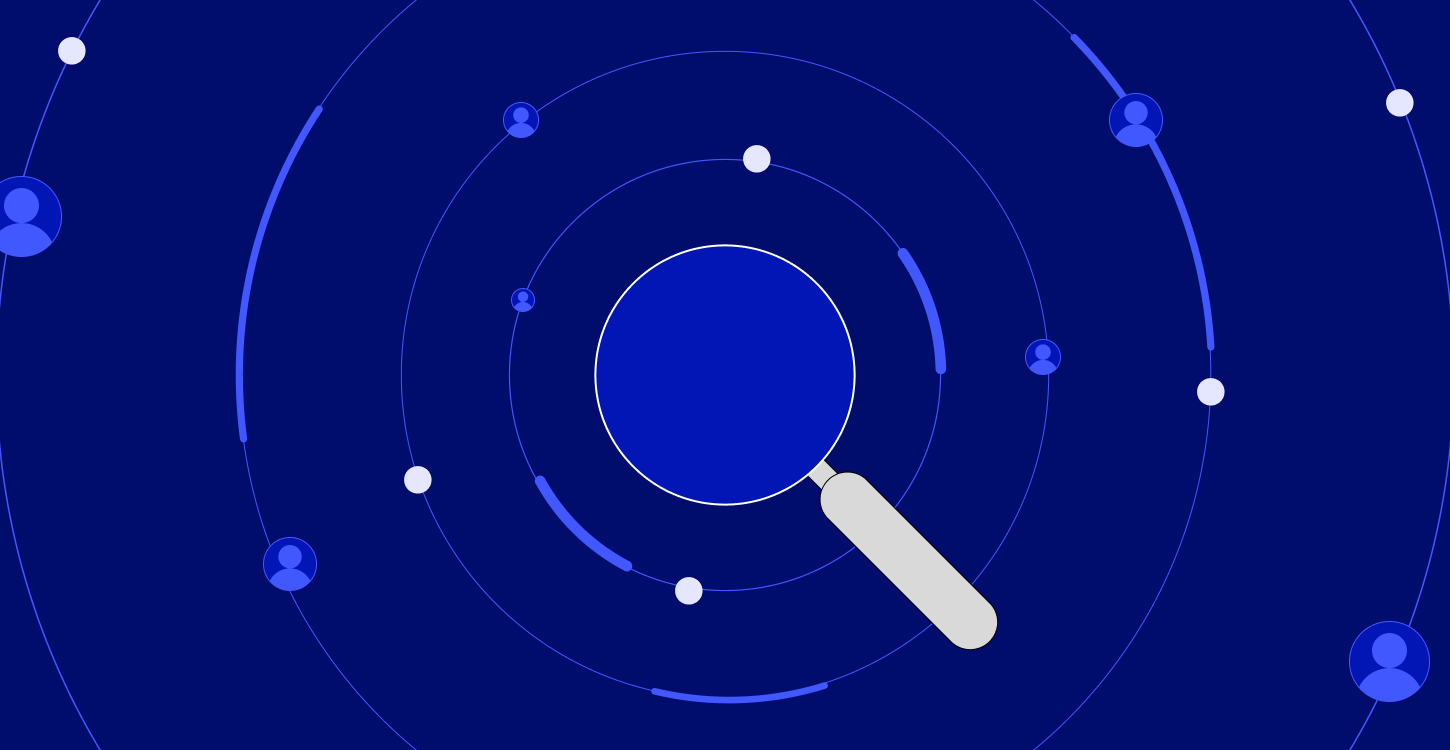
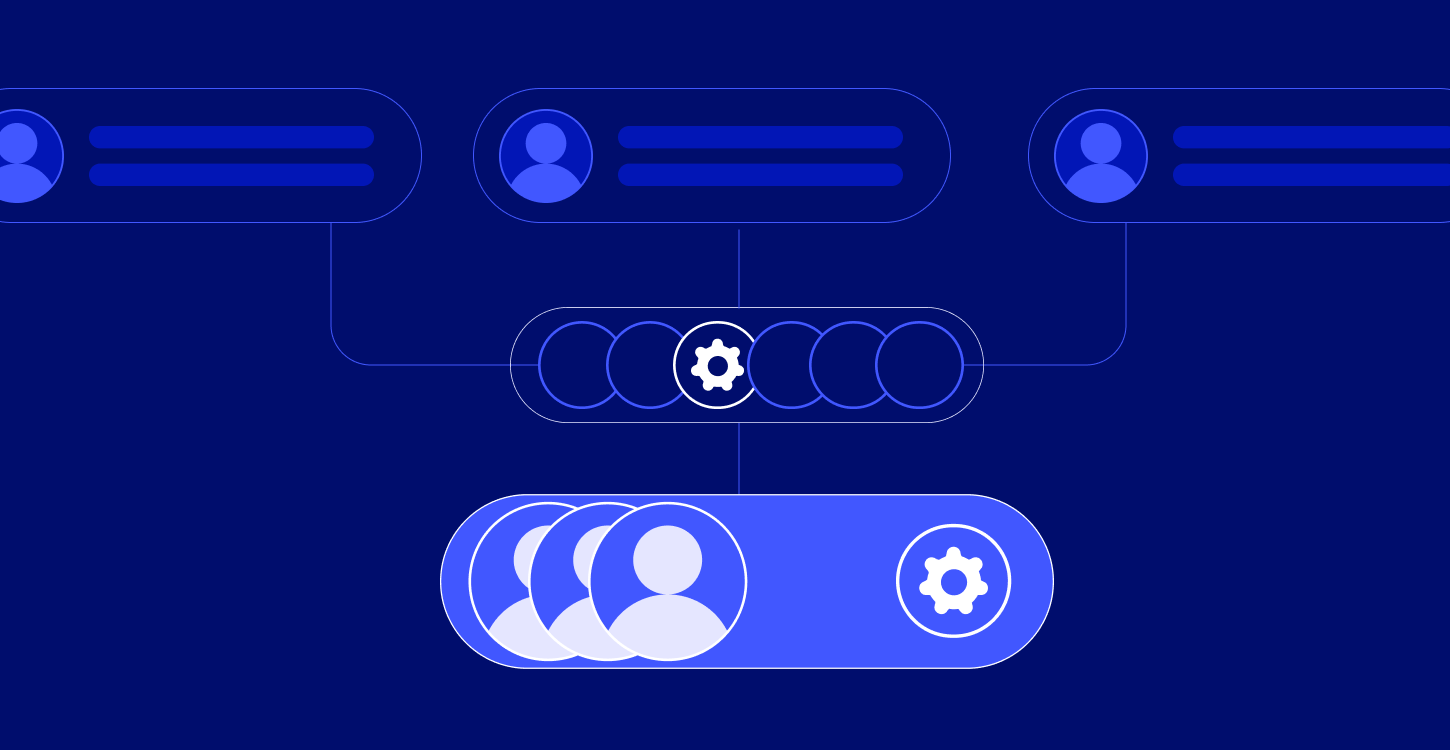
.png)
